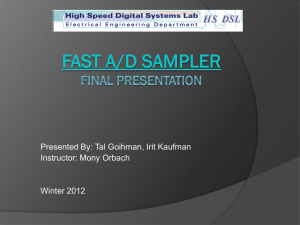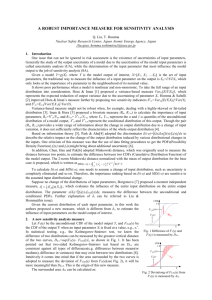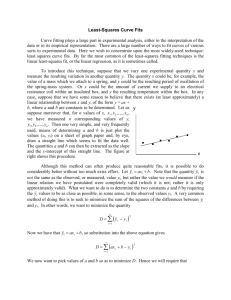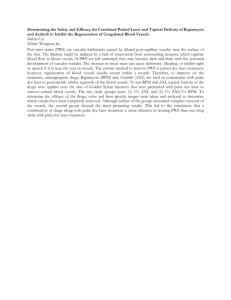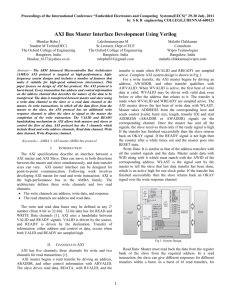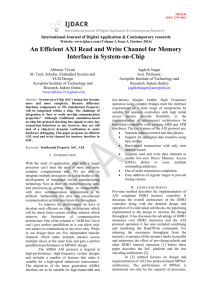Adam Taylors MicroZed Chronicles code_part24 20 KB
advertisement
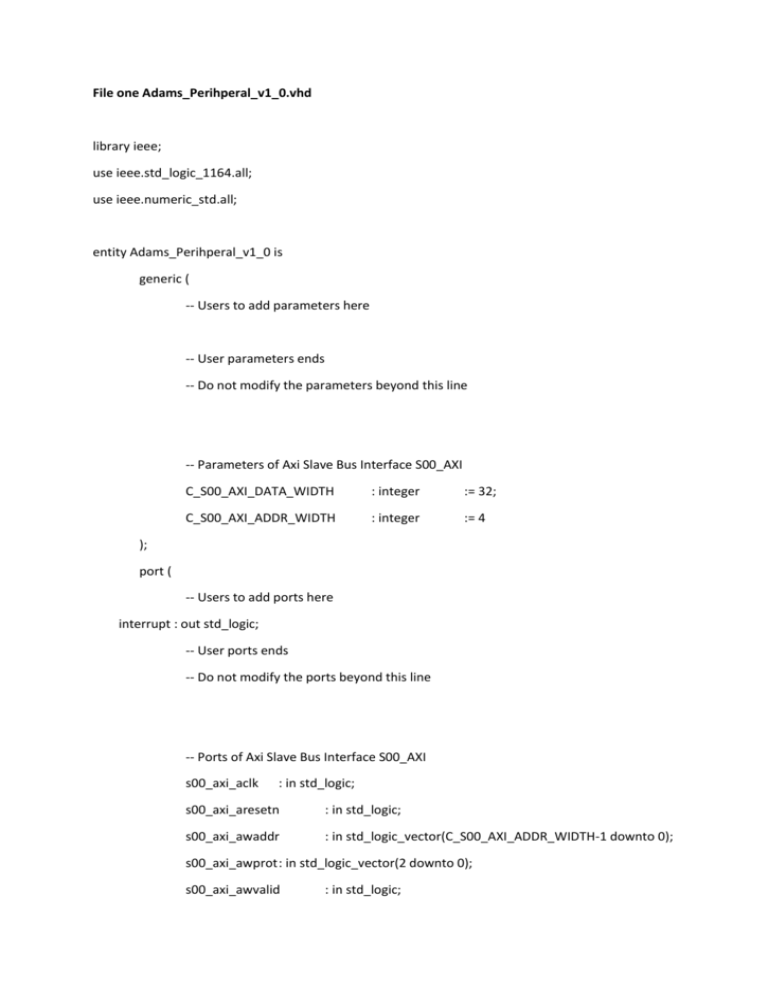
File one Adams_Perihperal_v1_0.vhd
library ieee;
use ieee.std_logic_1164.all;
use ieee.numeric_std.all;
entity Adams_Perihperal_v1_0 is
generic (
-- Users to add parameters here
-- User parameters ends
-- Do not modify the parameters beyond this line
-- Parameters of Axi Slave Bus Interface S00_AXI
C_S00_AXI_DATA_WIDTH
: integer
:= 32;
C_S00_AXI_ADDR_WIDTH
: integer
:= 4
);
port (
-- Users to add ports here
interrupt : out std_logic;
-- User ports ends
-- Do not modify the ports beyond this line
-- Ports of Axi Slave Bus Interface S00_AXI
s00_axi_aclk
: in std_logic;
s00_axi_aresetn
: in std_logic;
s00_axi_awaddr
: in std_logic_vector(C_S00_AXI_ADDR_WIDTH-1 downto 0);
s00_axi_awprot : in std_logic_vector(2 downto 0);
s00_axi_awvalid
: in std_logic;
s00_axi_awready
: out std_logic;
s00_axi_wdata : in std_logic_vector(C_S00_AXI_DATA_WIDTH-1 downto 0);
s00_axi_wstrb : in std_logic_vector((C_S00_AXI_DATA_WIDTH/8)-1 downto 0);
s00_axi_wvalid : in std_logic;
s00_axi_wready
: out std_logic;
s00_axi_bresp : out std_logic_vector(1 downto 0);
s00_axi_bvalid : out std_logic;
s00_axi_bready : in std_logic;
s00_axi_araddr : in std_logic_vector(C_S00_AXI_ADDR_WIDTH-1 downto 0);
s00_axi_arprot : in std_logic_vector(2 downto 0);
s00_axi_arvalid : in std_logic;
s00_axi_arready
: out std_logic;
s00_axi_rdata : out std_logic_vector(C_S00_AXI_DATA_WIDTH-1 downto 0);
s00_axi_rresp : out std_logic_vector(1 downto 0);
s00_axi_rvalid : out std_logic;
s00_axi_rready : in std_logic
);
end Adams_Perihperal_v1_0;
architecture arch_imp of Adams_Perihperal_v1_0 is
-- component declaration
component Adams_Perihperal_v1_0_S00_AXI is
generic (
C_S_AXI_DATA_WIDTH : integer
:= 32;
C_S_AXI_ADDR_WIDTH : integer
:= 4
);
port (
-- Adam Interface
Reg0 : OUT std_logic_vector(C_S_AXI_DATA_WIDTH-1 downto 0);
Reg1 : OUT std_logic_vector(C_S_AXI_DATA_WIDTH-1 downto 0);
Reg2 : OUT std_logic_vector(C_S_AXI_DATA_WIDTH-1 downto 0);
Reg3 : IN std_logic_vector(C_S_AXI_DATA_WIDTH-1 downto 0);
-- AXI Interface
S_AXI_ACLK
: in std_logic;
S_AXI_ARESETN : in std_logic;
S_AXI_AWADDR
: in std_logic_vector(C_S_AXI_ADDR_WIDTH-1 downto 0);
S_AXI_AWPROT : in std_logic_vector(2 downto 0);
S_AXI_AWVALID
: in std_logic;
S_AXI_AWREADY
: out std_logic;
S_AXI_WDATA : in std_logic_vector(C_S_AXI_DATA_WIDTH-1 downto 0);
S_AXI_WSTRB : in std_logic_vector((C_S_AXI_DATA_WIDTH/8)-1 downto 0);
S_AXI_WVALID : in std_logic;
S_AXI_WREADY : out std_logic;
S_AXI_BRESP
: out std_logic_vector(1 downto 0);
S_AXI_BVALID : out std_logic;
S_AXI_BREADY : in std_logic;
S_AXI_ARADDR : in std_logic_vector(C_S_AXI_ADDR_WIDTH-1 downto 0);
S_AXI_ARPROT : in std_logic_vector(2 downto 0);
S_AXI_ARVALID : in std_logic;
S_AXI_ARREADY
: out std_logic;
S_AXI_RDATA : out std_logic_vector(C_S_AXI_DATA_WIDTH-1 downto 0);
S_AXI_RRESP
: out std_logic_vector(1 downto 0);
S_AXI_RVALID : out std_logic;
S_AXI_RREADY : in std_logic
);
end component Adams_Perihperal_v1_0_S00_AXI;
CONSTANT c : signed(16 DOWNTO 0) := to_signed(-577,17);
CONSTANT b : signed(16 DOWNTO 0) := to_signed(57910,17);
CONSTANT a : signed(16 DOWNTO 0) := to_signed(33610,17);
SIGNAL squared : signed(33 DOWNTO 0); -- register holds input squared.
SIGNAL cx2 : signed(50 DOWNTO 0); --register used to hold Cx2
SIGNAL bx : signed(33 DOWNTO 0); -- register used to hold bx
SIGNAL res_int : signed(16 DOWNTO 0); --register holding the temporary result
SIGNAL result : std_logic_vector(31 DOWNTO 0);
SIGNAL reg0 : std_logic_vector(31 DOWNTO 0);
SIGNAL reg1 : std_logic_vector(31 DOWNTO 0);
SIGNAL reg2 : std_logic_vector(31 DOWNTO 0);
SIGNAL reg3 : std_logic_vector(31 DOWNTO 0):=(OTHERS=>'0');
begin
-- Instantiation of Axi Bus Interface S00_AXI
Adams_Perihperal_v1_0_S00_AXI_inst : Adams_Perihperal_v1_0_S00_AXI
generic map (
C_S_AXI_DATA_WIDTH => C_S00_AXI_DATA_WIDTH,
C_S_AXI_ADDR_WIDTH => C_S00_AXI_ADDR_WIDTH
)
port map (
reg0
=> reg0,
reg1
=> reg1,
reg2
=> reg2,
reg3
=> reg3,
S_AXI_ACLK
=> s00_axi_aclk,
S_AXI_ARESETN => s00_axi_aresetn,
S_AXI_AWADDR
=> s00_axi_awaddr,
S_AXI_AWPROT => s00_axi_awprot,
S_AXI_AWVALID
=> s00_axi_awvalid,
S_AXI_AWREADY
=> s00_axi_awready,
S_AXI_WDATA
=> s00_axi_wdata,
S_AXI_WSTRB
=> s00_axi_wstrb,
S_AXI_WVALID => s00_axi_wvalid,
S_AXI_WREADY => s00_axi_wready,
S_AXI_BRESP
=> s00_axi_bresp,
S_AXI_BVALID => s00_axi_bvalid,
S_AXI_BREADY => s00_axi_bready,
S_AXI_ARADDR => s00_axi_araddr,
S_AXI_ARPROT => s00_axi_arprot,
S_AXI_ARVALID => s00_axi_arvalid,
S_AXI_ARREADY
=> s00_axi_arready,
S_AXI_RDATA => s00_axi_rdata,
S_AXI_RRESP
=> s00_axi_rresp,
S_AXI_RVALID => s00_axi_rvalid,
S_AXI_RREADY => s00_axi_rready
);
-- Add user logic here
PROCESS(s00_axi_aclk)
BEGIN
IF rising_edge(s00_axi_aclk) THEN
squared <= signed( '0'& reg1(15 DOWNTO 0)) * signed('0'& reg1(15 DOWNTO 0));
cx2 <= (squared * c);
bx <= (signed('0'& reg1(15 DOWNTO 0))* b);
res_int <= a + cx2(48 DOWNTO 32) + ("000"& bx(32 DOWNTO 19));
result(15 downto 0) <= std_logic_vector(res_int(res_int'high -1 DOWNTO 0));
END IF;
END PROCESS;
--PROCESS(s00_axi_aclk)
--BEGIN
-- IF rising_edge(s00_axi_aclk) THEN
--
bx <= (signed('0'& reg1(15 DOWNTO 0))* b);
-- END IF;
--END PROCESS;
interrupt <= '0';
reg3 <= x"0000"& std_logic_vector(result(15 DOWNTO 0));
-- User logic ends
end arch_imp;
File Two Adams_Perihperal_v1_0_S00_AXI.vhd
library ieee;
use ieee.std_logic_1164.all;
use ieee.std_logic_arith.all;
use ieee.std_logic_unsigned.all;
entity Adams_Perihperal_v1_0_S00_AXI is
generic (
-- Users to add parameters here
-- User parameters ends
-- Do not modify the parameters beyond this line
-- Width of S_AXI data bus
C_S_AXI_DATA_WIDTH : integer
:= 32;
-- Width of S_AXI address bus
C_S_AXI_ADDR_WIDTH : integer
:= 4
);
port (
-- Users to add ports here
Reg0 : OUT std_logic_vector(C_S_AXI_DATA_WIDTH-1 downto 0);
Reg1 : OUT std_logic_vector(C_S_AXI_DATA_WIDTH-1 downto 0);
Reg2 : OUT std_logic_vector(C_S_AXI_DATA_WIDTH-1 downto 0);
Reg3 : IN std_logic_vector(C_S_AXI_DATA_WIDTH-1 downto 0);
-- User ports ends
-- Do not modify the ports beyond this line
-- Global Clock Signal
S_AXI_ACLK
: in std_logic;
-- Global Reset Signal. This Signal is Active LOW
S_AXI_ARESETN : in std_logic;
-- Write address (issued by master, acceped by Slave)
S_AXI_AWADDR
: in std_logic_vector(C_S_AXI_ADDR_WIDTH-1 downto 0);
-- Write channel Protection type. This signal indicates the
-- privilege and security level of the transaction, and whether
-- the transaction is a data access or an instruction access.
S_AXI_AWPROT : in std_logic_vector(2 downto 0);
-- Write address valid. This signal indicates that the master signaling
-- valid write address and control information.
S_AXI_AWVALID
: in std_logic;
-- Write address ready. This signal indicates that the slave is ready
-- to accept an address and associated control signals.
S_AXI_AWREADY
: out std_logic;
-- Write data (issued by master, acceped by Slave)
S_AXI_WDATA : in std_logic_vector(C_S_AXI_DATA_WIDTH-1 downto 0);
-- Write strobes. This signal indicates which byte lanes hold
-- valid data. There is one write strobe bit for each eight
-- bits of the write data bus.
S_AXI_WSTRB : in std_logic_vector((C_S_AXI_DATA_WIDTH/8)-1 downto 0);
-- Write valid. This signal indicates that valid write
-- data and strobes are available.
S_AXI_WVALID : in std_logic;
-- Write ready. This signal indicates that the slave
-- can accept the write data.
S_AXI_WREADY : out std_logic;
-- Write response. This signal indicates the status
-- of the write transaction.
S_AXI_BRESP
: out std_logic_vector(1 downto 0);
-- Write response valid. This signal indicates that the channel
-- is signaling a valid write response.
S_AXI_BVALID : out std_logic;
-- Response ready. This signal indicates that the master
-- can accept a write response.
S_AXI_BREADY : in std_logic;
-- Read address (issued by master, acceped by Slave)
S_AXI_ARADDR : in std_logic_vector(C_S_AXI_ADDR_WIDTH-1 downto 0);
-- Protection type. This signal indicates the privilege
-- and security level of the transaction, and whether the
-- transaction is a data access or an instruction access.
S_AXI_ARPROT : in std_logic_vector(2 downto 0);
-- Read address valid. This signal indicates that the channel
-- is signaling valid read address and control information.
S_AXI_ARVALID : in std_logic;
-- Read address ready. This signal indicates that the slave is
-- ready to accept an address and associated control signals.
S_AXI_ARREADY
: out std_logic;
-- Read data (issued by slave)
S_AXI_RDATA : out std_logic_vector(C_S_AXI_DATA_WIDTH-1 downto 0);
-- Read response. This signal indicates the status of the
-- read transfer.
S_AXI_RRESP
: out std_logic_vector(1 downto 0);
-- Read valid. This signal indicates that the channel is
-- signaling the required read data.
S_AXI_RVALID : out std_logic;
-- Read ready. This signal indicates that the master can
-- accept the read data and response information.
S_AXI_RREADY : in std_logic
);
end Adams_Perihperal_v1_0_S00_AXI;
architecture arch_imp of Adams_Perihperal_v1_0_S00_AXI is
-- AXI4LITE signals
signal axi_awaddr
: std_logic_vector(C_S_AXI_ADDR_WIDTH-1 downto 0);
signal axi_awready
: std_logic;
signal axi_wready
: std_logic;
signal axi_bresp : std_logic_vector(1 downto 0);
signal axi_bvalid
: std_logic;
signal axi_araddr
: std_logic_vector(C_S_AXI_ADDR_WIDTH-1 downto 0);
signal axi_arready
: std_logic;
signal axi_rdata : std_logic_vector(C_S_AXI_DATA_WIDTH-1 downto 0);
signal axi_rresp : std_logic_vector(1 downto 0);
signal axi_rvalid : std_logic;
-- Example-specific design signals
-- local parameter for addressing 32 bit / 64 bit C_S_AXI_DATA_WIDTH
-- ADDR_LSB is used for addressing 32/64 bit registers/memories
-- ADDR_LSB = 2 for 32 bits (n downto 2)
-- ADDR_LSB = 3 for 64 bits (n downto 3)
constant ADDR_LSB : integer := (C_S_AXI_DATA_WIDTH/32)+ 1;
constant OPT_MEM_ADDR_BITS : integer := 1;
--------------------------------------------------- Signals for user logic register space example
----------------------------------------------------- Number of Slave Registers 4
signal slv_reg0 :std_logic_vector(C_S_AXI_DATA_WIDTH-1 downto 0);
signal slv_reg1 :std_logic_vector(C_S_AXI_DATA_WIDTH-1 downto 0);
signal slv_reg2 :std_logic_vector(C_S_AXI_DATA_WIDTH-1 downto 0);
signal slv_reg3 :std_logic_vector(C_S_AXI_DATA_WIDTH-1 downto 0);
signal slv_reg_rden
: std_logic;
signal slv_reg_wren
: std_logic;
signal reg_data_out
:std_logic_vector(C_S_AXI_DATA_WIDTH-1 downto 0);
signal byte_index
: integer;
begin
-- I/O Connections assignments
S_AXI_AWREADY
<= axi_awready;
S_AXI_WREADY <= axi_wready;
S_AXI_BRESP
<= axi_bresp;
S_AXI_BVALID <= axi_bvalid;
S_AXI_ARREADY
<= axi_arready;
S_AXI_RDATA <= axi_rdata;
S_AXI_RRESP
<= axi_rresp;
S_AXI_RVALID <= axi_rvalid;
-- Implement axi_awready generation
-- axi_awready is asserted for one S_AXI_ACLK clock cycle when both
-- S_AXI_AWVALID and S_AXI_WVALID are asserted. axi_awready is
-- de-asserted when reset is low.
Reg0 <= slv_reg0;
Reg1 <= slv_reg1;
Reg2 <= slv_reg2;
slv_reg3 <= Reg3;
process (S_AXI_ACLK)
begin
if rising_edge(S_AXI_ACLK) then
if S_AXI_ARESETN = '0' then
axi_awready <= '0';
else
if (axi_awready = '0' and S_AXI_AWVALID = '1' and S_AXI_WVALID = '1') then
-- slave is ready to accept write address when
-- there is a valid write address and write data
-- on the write address and data bus. This design
-- expects no outstanding transactions.
axi_awready <= '1';
else
axi_awready <= '0';
end if;
end if;
end if;
end process;
-- Implement axi_awaddr latching
-- This process is used to latch the address when both
-- S_AXI_AWVALID and S_AXI_WVALID are valid.
process (S_AXI_ACLK)
begin
if rising_edge(S_AXI_ACLK) then
if S_AXI_ARESETN = '0' then
axi_awaddr <= (others => '0');
else
if (axi_awready = '0' and S_AXI_AWVALID = '1' and S_AXI_WVALID = '1') then
-- Write Address latching
axi_awaddr <= S_AXI_AWADDR;
end if;
end if;
end if;
end process;
-- Implement axi_wready generation
-- axi_wready is asserted for one S_AXI_ACLK clock cycle when both
-- S_AXI_AWVALID and S_AXI_WVALID are asserted. axi_wready is
-- de-asserted when reset is low.
process (S_AXI_ACLK)
begin
if rising_edge(S_AXI_ACLK) then
if S_AXI_ARESETN = '0' then
axi_wready <= '0';
else
if (axi_wready = '0' and S_AXI_WVALID = '1' and S_AXI_AWVALID = '1') then
-- slave is ready to accept write data when
-- there is a valid write address and write data
-- on the write address and data bus. This design
-- expects no outstanding transactions.
axi_wready <= '1';
else
axi_wready <= '0';
end if;
end if;
end if;
end process;
-- Implement memory mapped register select and write logic generation
-- The write data is accepted and written to memory mapped registers when
-- axi_awready, S_AXI_WVALID, axi_wready and S_AXI_WVALID are asserted. Write strobes
are used to
-- select byte enables of slave registers while writing.
-- These registers are cleared when reset (active low) is applied.
-- Slave register write enable is asserted when valid address and data are available
-- and the slave is ready to accept the write address and write data.
slv_reg_wren <= axi_wready and S_AXI_WVALID and axi_awready and S_AXI_AWVALID ;
process (S_AXI_ACLK)
variable loc_addr :std_logic_vector(OPT_MEM_ADDR_BITS downto 0);
begin
if rising_edge(S_AXI_ACLK) then
if S_AXI_ARESETN = '0' then
slv_reg0 <= (others => '0');
slv_reg1 <= (others => '0');
slv_reg2 <= (others => '0');
-- slv_reg3 <= (others => '0');
else
loc_addr := axi_awaddr(ADDR_LSB + OPT_MEM_ADDR_BITS downto ADDR_LSB);
if (slv_reg_wren = '1') then
case loc_addr is
when b"00" =>
for byte_index in 0 to (C_S_AXI_DATA_WIDTH/8-1) loop
if ( S_AXI_WSTRB(byte_index) = '1' ) then
-- Respective byte enables are asserted as per write strobes
-- slave registor 0
slv_reg0(byte_index*8+7 downto byte_index*8) <= S_AXI_WDATA(byte_index*8+7
downto byte_index*8);
end if;
end loop;
when b"01" =>
for byte_index in 0 to (C_S_AXI_DATA_WIDTH/8-1) loop
if ( S_AXI_WSTRB(byte_index) = '1' ) then
-- Respective byte enables are asserted as per write strobes
-- slave registor 1
slv_reg1(byte_index*8+7 downto byte_index*8) <= S_AXI_WDATA(byte_index*8+7
downto byte_index*8);
end if;
end loop;
when b"10" =>
for byte_index in 0 to (C_S_AXI_DATA_WIDTH/8-1) loop
if ( S_AXI_WSTRB(byte_index) = '1' ) then
-- Respective byte enables are asserted as per write strobes
-- slave registor 2
slv_reg2(byte_index*8+7 downto byte_index*8) <= S_AXI_WDATA(byte_index*8+7
downto byte_index*8);
end if;
end loop;
when b"11" =>
for byte_index in 0 to (C_S_AXI_DATA_WIDTH/8-1) loop
if ( S_AXI_WSTRB(byte_index) = '1' ) then
-- Respective byte enables are asserted as per write strobes
-- slave registor 3
-- slv_reg3(byte_index*8+7 downto byte_index*8) <=
S_AXI_WDATA(byte_index*8+7 downto byte_index*8);
end if;
end loop;
when others =>
slv_reg0 <= slv_reg0;
slv_reg1 <= slv_reg1;
slv_reg2 <= slv_reg2;
-- slv_reg3 <= slv_reg3;
end case;
end if;
end if;
end if;
end process;
-- Implement write response logic generation
-- The write response and response valid signals are asserted by the slave
-- when axi_wready, S_AXI_WVALID, axi_wready and S_AXI_WVALID are asserted.
-- This marks the acceptance of address and indicates the status of
-- write transaction.
process (S_AXI_ACLK)
begin
if rising_edge(S_AXI_ACLK) then
if S_AXI_ARESETN = '0' then
axi_bvalid <= '0';
axi_bresp <= "00"; --need to work more on the responses
else
if (axi_awready = '1' and S_AXI_AWVALID = '1' and axi_wready = '1' and S_AXI_WVALID =
'1' and axi_bvalid = '0' ) then
axi_bvalid <= '1';
axi_bresp <= "00";
elsif (S_AXI_BREADY = '1' and axi_bvalid = '1') then --check if bready is asserted while
bvalid is high)
axi_bvalid <= '0';
-- (there is a possibility that bready is always asserted
high)
end if;
end if;
end if;
end process;
-- Implement axi_arready generation
-- axi_arready is asserted for one S_AXI_ACLK clock cycle when
-- S_AXI_ARVALID is asserted. axi_awready is
-- de-asserted when reset (active low) is asserted.
-- The read address is also latched when S_AXI_ARVALID is
-- asserted. axi_araddr is reset to zero on reset assertion.
process (S_AXI_ACLK)
begin
if rising_edge(S_AXI_ACLK) then
if S_AXI_ARESETN = '0' then
axi_arready <= '0';
axi_araddr <= (others => '1');
else
if (axi_arready = '0' and S_AXI_ARVALID = '1') then
-- indicates that the slave has acceped the valid read address
axi_arready <= '1';
-- Read Address latching
axi_araddr <= S_AXI_ARADDR;
else
axi_arready <= '0';
end if;
end if;
end if;
end process;
-- Implement axi_arvalid generation
-- axi_rvalid is asserted for one S_AXI_ACLK clock cycle when both
-- S_AXI_ARVALID and axi_arready are asserted. The slave registers
-- data are available on the axi_rdata bus at this instance. The
-- assertion of axi_rvalid marks the validity of read data on the
-- bus and axi_rresp indicates the status of read transaction.axi_rvalid
-- is deasserted on reset (active low). axi_rresp and axi_rdata are
-- cleared to zero on reset (active low).
process (S_AXI_ACLK)
begin
if rising_edge(S_AXI_ACLK) then
if S_AXI_ARESETN = '0' then
axi_rvalid <= '0';
axi_rresp <= "00";
else
if (axi_arready = '1' and S_AXI_ARVALID = '1' and axi_rvalid = '0') then
-- Valid read data is available at the read data bus
axi_rvalid <= '1';
axi_rresp <= "00"; -- 'OKAY' response
elsif (axi_rvalid = '1' and S_AXI_RREADY = '1') then
-- Read data is accepted by the master
axi_rvalid <= '0';
end if;
end if;
end if;
end process;
-- Implement memory mapped register select and read logic generation
-- Slave register read enable is asserted when valid address is available
-- and the slave is ready to accept the read address.
slv_reg_rden <= axi_arready and S_AXI_ARVALID and (not axi_rvalid) ;
process (slv_reg0, slv_reg1, slv_reg2, slv_reg3, axi_araddr, S_AXI_ARESETN, slv_reg_rden)
variable loc_addr :std_logic_vector(OPT_MEM_ADDR_BITS downto 0);
begin
if S_AXI_ARESETN = '0' then
reg_data_out <= (others => '1');
else
-- Address decoding for reading registers
loc_addr := axi_araddr(ADDR_LSB + OPT_MEM_ADDR_BITS downto ADDR_LSB);
case loc_addr is
when b"00" =>
reg_data_out <= slv_reg0;
when b"01" =>
reg_data_out <= slv_reg1;
when b"10" =>
reg_data_out <= slv_reg2;
when b"11" =>
reg_data_out <= slv_reg3;
when others =>
reg_data_out <= (others => '0');
end case;
end if;
end process;
-- Output register or memory read data
process( S_AXI_ACLK ) is
begin
if (rising_edge (S_AXI_ACLK)) then
if ( S_AXI_ARESETN = '0' ) then
axi_rdata <= (others => '0');
else
if (slv_reg_rden = '1') then
-- When there is a valid read address (S_AXI_ARVALID) with
-- acceptance of read address by the slave (axi_arready),
-- output the read dada
-- Read address mux
axi_rdata <= reg_data_out;
end if;
end if;
end if;
end process;
-- Add user logic here
-- User logic ends
end arch_imp;
-- register read data
